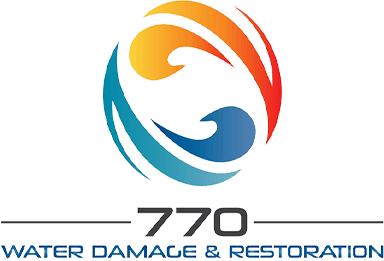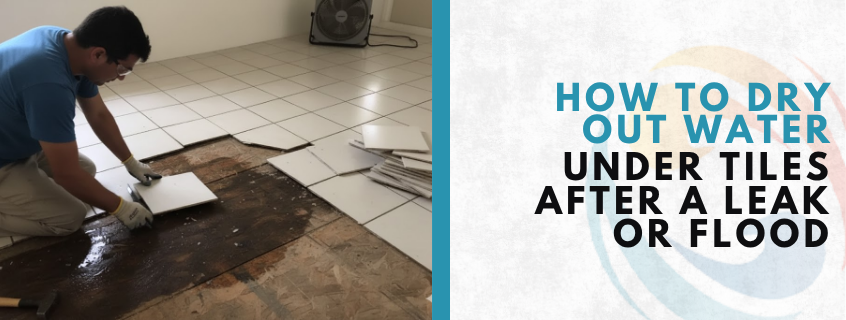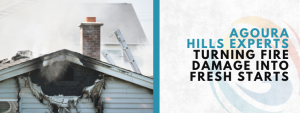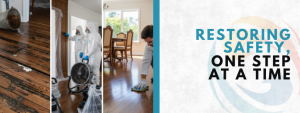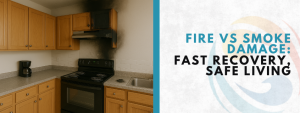Water seeping beneath your tile floor is more than just an inconvenience; it’s a potential threat to your home’s structure and indoor health. Even though tile is highly durable and water-resistant, moisture can still penetrate through tiny cracks, unsealed grout, or loose tiles. Once that happens, knowing how to dry out water under tiles quickly becomes essential to prevent further damage.
For homeowners in Hermosa Beach, where humidity and ocean air are constant factors, dealing with water damage under tile floor is not uncommon. Acting fast can make the difference between a simple cleanup and a costly restoration.
Understanding Why Water Gets Trapped Beneath Tile
Tile floors might look solid and impenetrable, but the materials underneath—grout, mortar, and subfloor—can absorb and trap water easily. Over time, this leads to mold growth, weakened adhesive bonds, and even structural damage.
Common Causes of Water Under Tiles
Understanding the causes of water under tiles helps prevent future problems:
- Leaking Pipes: A slow, unnoticed plumbing leak beneath the floor can saturate the subfloor and cause hidden moisture buildup.
- Appliance Failures: Overflowing dishwashers, washing machines, or refrigerators can push water between tiles.
- Storm or Flood Damage: Homes in Hermosa Beach are especially vulnerable to stormwater intrusion during heavy rain.
- Condensation from Humidity: High humidity levels can cause moisture to form beneath the surface.
- Poor Installation: Missing or cracked grout lines and improperly sealed tiles make it easier for water to seep through.
Signs You Might Have Water Damage Beneath Tiles
- Tiles feel loose or sound hollow when stepped on
- Persistent musty or damp odors
- White, powdery residue (efflorescence) on grout
- Discoloration or dark spots in tiles or grout lines
- Mold growth near baseboards or walls
Spotting these signs early is crucial for homeowners in Hermosa Beach who want to prevent small leaks from turning into major flooring repairs.
Step-by-Step Guide: How to Dry Out Water Under Tiles
Step 1: Stop the Source and Stay Safe
Before starting any restoration work, identify and stop the water source immediately. Shut off the main water valve if necessary, or fix any appliance or plumbing leaks contributing to the issue.
Turn off electricity to wet areas and wear protective gear like rubber boots and gloves. Then, document the affected area with photos and videos for insurance purposes proof can help during claims if you require emergency water damage repair or cleanup assistance later.
Step 2: Remove Standing Water
The first step in how to dry out water under tiles is clearing out any standing water. This prevents it from seeping deeper into the subfloor or causing mold.
- Use a wet/dry vacuum or mop to remove visible water.
- Dry smaller puddles using towels or absorbent cloths.
- Clean the area with a mild, pH-neutral cleaner to eliminate bacteria.
- Avoid harsh chemicals that could damage grout or tile finishes.
If flooding is extensive, consider contacting water removal services in your area. Professionals have industrial-grade extractors that remove water quickly and safely.
Step 3: Circulate Air and Dehumidify
Drying trapped moisture beneath the tile takes time and proper airflow. Here’s how to accelerate the process effectively:
- Use fans to circulate air directly over the wet area.
- Run a dehumidifier to draw moisture from the air and subfloor.
- Open windows and doors to increase natural ventilation. This works especially well in Hermosa Beach’s coastal environment.
- Operate your HVAC system to stabilize humidity levels indoors.
- Check the floor with a moisture meter to ensure it is completely dry before resealing.
For deeper or more widespread water damage under tile floor, professionals may use specialized drying mats that pull moisture through grout and tile without removing the flooring.
Step 4: Inspect and Repair the Damage
Once the floor is dry, inspect every section carefully. Even after successful drying, water can weaken adhesive bonds or leave behind residue that compromises the surface.
- Tap tiles: If they sound hollow, water may still be trapped beneath.
- Examine grout: Crumbling, discolored, or moldy grout should be replaced.
- Replace damaged tiles: Lift and reinstall affected tiles after ensuring the subfloor is dry.
- Seal your grout and tiles: Applying a sealant helps prevent future moisture infiltration.
A professional inspection can determine whether full or partial tile replacement is necessary. In most Hermosa Beach homes, small repairs and regrouting are often enough if handled promptly.
When to Call Professionals
If you’re dealing with large-scale flooding or moisture that’s been sitting for more than 24 hours, it’s best to call professionals offering 24/7 water damage response. Trained experts can assess the extent of the damage using advanced moisture detection tools and ensure that no water remains trapped under your floor.
Professional services can also prevent mold growth, sanitize affected areas, and restore your floors safely and efficiently. This is especially important where humid coastal conditions can make drying more challenging.
Preventing Future Water Damage
Once you’ve learned how to dry out tiles, taking steps to prevent recurrence is vital. Prevention is always cheaper and easier than restoration.
- Seal grout annually to create a water-resistant barrier.
- Inspect plumbing regularly to catch small leaks early.
- Maintain good ventilation by using fans or dehumidifiers in humid months.
- Clean up spills immediately to prevent seepage through grout lines.
- Schedule maintenance inspections with tile or flooring professionals.
With consistent care, you can enjoy long-lasting, beautiful tile floors that resist damage and maintain their integrity for years.
A Clean Finish to Remember
Water beneath your tile floor may seem like a small problem, but if ignored, it can quickly lead to mold, weakened flooring, and expensive repairs. Knowing how to dry out water under tiles allows you to act fast and minimize long-term damage. For homeowners, where humidity and ocean air can worsen moisture issues, prevention and quick response are essential. Partnering with experts in Water Damage Restoration Hermosa Beach ensures your floors are properly dried, sanitized, and restored using professional tools and techniques. By staying proactive with regular maintenance, sealing grout, and scheduling inspections, you can protect your home from hidden water damage and keep your tile floors strong and beautiful year-round.
